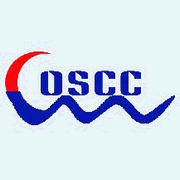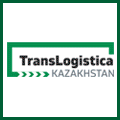ACCORDING to the analysis released by Shanghai port authority, Shanghai will continue to stay as the world's largest container port at 33 million TEU and for overall tonnage, Xinhua reports.
Last year, Shanghai lifted 31.74 million TEU, making the first port in the world to have a container throughput more than 30 million TEU.
The port's container through put dropped 3.3 per cent year on year to 2.62 million TEU in January, but increased 13.1 per cent to 2.19 million TEU in February.
It expects the situation to improve despite weak market conditions globally.
Source Shipping Gazette - Daily Shipping News
DANISH shipping giant, Maersk Line, the world's largest carrier, has announced it plans to increase the rates of its northern Europe (including Russia and Scandinavia) to Asia (including Japan) services by US$400 per TEU from May 1.
The carrier said earlier in Weekly Highlights that it has ceased all North Europe-Asia bookings until May and also decided to introduce super slow steaming to its AE1, AE6, AE7, AE9 and AE10 eastbound North Europe-Asia services.
Some were critical of the Maersk cargo booking halt. Ben Hackett of Hackett Associates, a shipping analyst who produces the Global Port Tracker, said: "They are using it to bump the freight rates up. I think it is more an unwillingness to carry cargo at certain rates."
Source Shipping Gazette - Daily Shipping News
ISRAELI's Zim Integrated Shipping Services (Zim) has announced a 2011 financial loss of US$397 million, down 835 per cent from a profit of $54 million in 2010.
In the fourth quarter of 2011, the carrier reported a loss of $96 million, worsening from a $66 million loss in the previous quarter. Zim made a profit of $151 million in the last quarter of 2010.
Zim is the world's 16th largest carrier with a two per cent market share, according to Alphaliner's Top 100 League Table.
Source Shipping Gazette - Daily Shipping News
THE general strike throughout Spain over "stringent" austerity measures to meet obligations in the Euro debt crisis is expected to cause disruption to freight operations and supply chains at airports and city centres.
Protesting unions hope to bring the country to a halt by timing the strike a day before the austerity budget is to announced, reported International Freighting Weekly. Newly elected Prime Minister Mariano Rajoy has himself called the financial package "very, very stringent".
The budget is widely expected to include a EUR50 billion cuts in public spending, with public sector workers subject to pay freezes and privatisation moves.
Separately, Iberia pilots also plan to stop flights on Monday and Friday from April 9 to protest against the launch of budget airline called Iberia Express.
Source Shipping Gazette - Daily Shipping News
DANISH shipping giant Maersk Line has gained the Ukraine's National Maritime Rating nomination of Gold Container due to boosting container shipping to the country's ports by 31.3 per cent to 145,517 TEU in 2011.
The rating listed French carrier CMA CGM second with 128,094 TEU, a 20 per cent increase and in third place was Swiss-based MSC with an increase of 10.5 per cent to 116,099 TEU.
Source Shipping Gazette - Daily Shipping News
SOUTHEASTERN Fujian province spent CNY9.14 billion (US$1.45 billion) on traffic infrastructure during the first two months of this year, the largest sum among eastern China provinces and the third in China, Xinhua reports.
The province spent CNY3.5 billion on road projects, taking up 18 per cent of the annual schedule, up 11 per cent year on year. As of end of February, there are 78 road projects totalling 1,037 kilometres under construction, accounting for 58 per cent of the annual target.
The CNY1.15 billion was invested on port and shipping projects. More than CNY1.03 billion was spent on terminals and CNY110 million was spent on navigational channels. Fifteen major projects, including the berth No 8 to No 10 at port of Xiamen's Zhaoyin port will cost CNY380 million.
Source Shipping Gazette - Daily Shipping News
PORT of Qinzhou, in southwest China's Guangxi Autonomous Region, lifted 66,000 TEU in January and February, 15.8 per cent more than in the same period a year ago, Xinhua reports.
In the same period, the port recorded a foreign trade value of US$420 million, up 21.5 per cent year on year.
Source Shipping Gazette - Daily Shipping News
SOUTHWEST Guangxi Autonomous Region plans to spend CNY14 billion (US$2.21 billion) on waterway traffic projects this year with Beibu Gulf port capacity to be increased to 160 million tonnes, while Xijiang River's cargo capacity to rise 100 million tonnes, Xinhua reports.
This year, Guangxi plans to build the No 403 to No 407 berth at the port of Fangcheng and the No 3 and No 4 berth in the Beihai's Tieshan port area. Meanwhile, Guangxi will also accelerate construction at the port of Qinzhou's Jingujiang River navigational channel and the No 1 to No 3 berth at Dalanping port area.
Fangcheng port's berth project will take up 41 per cent of the total investment. Beihai port's berth project will take up 78 per cent. Qinzhou's Jingujiang river navigational channel will account for 8.5 per cent. Dalanping port area's berth project will take up 3.9 per cent.
In the meanwhile, Guangxi plans to complete the construction of Xijiang River's distribution network, port Nanning's Niuwan operation area phase 1 of the project and the port of Laibin's Bingang operation area in phase 2 of the project this year.
Source Shipping Gazette - Daily Shipping News
DUBAI's DP World has announced that its global portfolio of marine terminals in 2011 delivered a better than expected profit of US$751 million, an increase of 67 per cent year on year, the company reported.
"This improvement in profitability is a reflection of our strategy, which sees us focus on the faster growing emerging markets and more profitable origin and destination (O&D) and gateway cargo," said DP World chairman Sultan Ahmed bin Sulayem.
The company said in a statement posted on its website that profit attributable to shareholders was $683 million as strong profit growth from operations was supplemented with a one-off gain, including the profit on the monetisation of 75 per cent of its Australian terminals.
Before separately disclosed items of $459 million, 2011 profit amounted to $532 million, up 18 per cent compared to a profit of $450 million in 2010.
Consolidated volumes for the 12 months ending December 31, 2011 amounted to 27.5 million TEU, up an underlying nine per cent year on year, on an underlying 14 per cent revenue growth to $2,978 million. Underlying EBITDA growth was 19 per cent compared to the previous year at $1,307 million, with an adjusted EBITDA margin of 43.9 per cent.
"During 2011, DP World benefited from the improvement in global container volumes whilst retaining a very clear focus on generating additional revenue, driving productivity and managing costs," the company said.
Each of the group's three regions delivered a superior performance when compared with the prior year. In the Middle East, Europe and Africa region, EBITDA grew nine per cent year on year to $861 million. In the Asia Pacific and Indian subcontinent, EBITDA increased by 26 per cent to $322 million.
The Americas and Australia region delivered EBITDA of $203 million or, excluding the deconsolidation of the five Australia terminals, on an underlying basis, delivered an EBITDA growth of 37 per cent.
Source Shipping Gazette - Daily Shipping News
FRENCH container shipping group CMA CGM has been recognised for its ongoing commitment towards providing quality services and innovation after receiving two awards.
The company was named "International Carrier of the Year" for the second year running by one of its major customers, ASDA, an British subsidiary of the American retail giant Walmart.
It has also been named the Best Partner of the Year 2012 by the Samsung group.
"Samsung expressed its recognition of the important role played by the group towards improving management of its supply chain and supporting its global expansion," a statement from the shipping line said.
On behalf of ASDA UK, logistics manager Lee Hodgkin said: "The CMA CGM group has given us valuable assistance with its innovative solutions. Of note is that their unwavering support has led to the provision of a rail service, unique to us, from Southampton to the north east England, speeding up transport services."
Source Shipping Gazette - Daily Shipping News
NOL Group, the Singapore-based shipping and logistics company, named Olivier Lim, chief investment officer at Singapore's CapitaLand, to its board of directors from April 12.
"We are pleased to add an executive with the skill of Olivier Lim to the board," said NOL chairman Cheng Wai Keung.
Said NOL director Kwa Chong Seng: "We will benefit greatly from his experience as a leader in business and finance."
Mr Lim spent six years as CapitaLand's CFO before becoming chief investment officer in early 2012. Before that, he led the Real Estate Unit in Corporate Banking at Citibank in Singapore.
Said Mr Lim: "NOL is a company with worldwide reach in transportation and logistics. I am grateful for the opportunity to work with the board and management team to help guide it into the future."
Mr Lim is the non-executive chairman of Australand Holdings Limited, and a non-executive Director of CapitaMalls Asia Limited, CapitaMall Trust Management Limited, CapitaCommercial Trust Management Limited and Raffles Medical Group Ltd. Mr Lim also serves as a board member of Sentosa Development Corporation, and as the non-executive chairman of its subsidiary, Mount Faber Leisure Group Pte Ltd.
Source Shipping Gazette - Daily Shipping News
JAPANESE shipping major NYK was recently selected for the UK-based FTSE Group's FTSE4Good Index, a major socially responsible investment (SRI) index that has included NYK for many years.
The FTSE4Good Index is one of the two leading indexes used by investors concerned about corporate social responsibility criteria meeting investment standards of ethical activities. The other major index is the Dow Jones Sustainability Index.
Selection in the FTSE4Good Index is based on independent international standards of corporate environmental sustainability and social responsibility covering areas of environmental management, human rights, supply chain labour standards, bribery prevention and climate change. NYK has repeatedly received a top rating in the "Environmental management" category.
Earlier this year, NYK was recognised as one of the 2012 World's Most Ethical Companies for the fifth consecutive year. NYK will continue to take an active role in social issues, including the conservation of the environment, to contribute to the achievement of a better global society, said a company statement.
FTSE Group is jointly owned by London's Financial Times and the London Stock Exchange. The FTSE4Good Index is compiled and managed by the FTSE Group, which undertakes related operations involving stocks, bonds, and real estate, on a global scale. The group has offices in London, New York, Tokyo, and nine other major cities, providing services for clients in 77 countries.
Source Shipping Gazette - Daily Shipping News
INTERNATIONAL provider of insurance and related risk management services, TT Club, has called on operators to save costs by tightening procedures to minimise accidents, breakdowns, delays and other risks.
Speaking at the freight industry forum, TOC Container Supply Chain Asia in Hong Kong recently, TT Club's director of global risk assessment, Laurence Jones, said that based on an extensive analysis of the company's claims, valued in excess of US$120 million, nearly 80 per cent of incidents resulting in a claim were avoidable and the vast majority involve human error.
In urging operators to heed lessons of TT's analysis, Mr Jones said: "We found that the adoption of proven operational procedures and available safety technology could prevent many of the incidents. Relatively small investments in training, and maintenance could bring significant commercial benefits through less disruption to operations, lower insurance premiums and more satisfied customers."
In terms of causal effect the analysis showed that 63 per cent of the total cost (as opposed to the number) of claims were due to operational factors, with maintenance (or lack of it) accounting for a further third; leaving those lacking human intervention, mainly weather related incidents contributing only four per cent of the cost.
When it comes to the movement of freight around the world, TT Club's concludes that the prevention of many claims lies in efficient and well constructed processes and the analysis presented by Jones reinforced this belief. Forty-three per cent of the cost of claims from operational factors resulted from errors or faults in an operator's systems or processes.
"While theft accounted for 29 per cent of operational claims, poor processes and systems were the biggest culprits," Mr Jones said. "A whole range of substandard practices were in evidence, such as bad stowage and handling; customs fines due to incorrect or late paperwork; poor instruction on management of refrigeration equipment; and wrong release of cargo. All such claims could have been avoided with tighter procedures."
The other major contributor to damage and cost was found to be fire destroying property, equipment and cargo. Most building damage came from electrical faults; for lifting equipment, a lack of sufficient, regular maintenance checks was the main cause and fire in container cargo was mainly due to poor stowage or mis-declaration of the goods. Each factor, Mr Jones said, could be mitigated by adequate attention by either operators or shippers.
Source Shipping Gazette - Daily Shipping News
PERUVIAN containerised mango exports have fallen 36 per cent a week overall year on year because of bad weather and illegal mining, reports Fresh Plaza, the fruit shippers' news portal.
Overall Peruvian mango export volume posted a 50 per cent drop year on year because of climate factors, according to Juan Carlos Rivera, manager of the Peruvian Association of Mango Producers and Exporters (APEM).
The main destinations for Peruvian fruit are the Netherlands (43 per cent), the United States (37 per cent) and the UK (seven per cent).
Mr Rivera estimated that during the production of April 2011 - March 2012 some 63 tons will be exported, which represents a decrease of 52 per cent compared to 130,000 tons exported in the period of April 2010 - March 2011.
Source Shipping Gazette - Daily Shipping News
KOREAN AIR and Hanjin Group chairman YH Cho has been named the 2012 Asian Business Leader of the Year by the Asia Society of Southern California (ASSC) for his leadership and investment in Southern California, and his redevelopment of the heart of downtown Los Angeles.
Also honoured was ASSC University of Southern California president CL Max Nikias for the school's commitment to advancing the internationalisation of education in the US, especially in its outreach to students from Asia/Pacific. Mr Cho is also on that university's board of trustees.
"As Asia Society Southern California marks its 27 years of serving our diverse communities in the Southland, we are humbled by these leaders' sheer determination and commitment to enhancing the strong ties between the people of Southern California and Asia/Pacific," said Thomas McLain, chairman of Asia Society Southern California.
Source Shipping Gazette - Daily Shipping News
The magazine SEA has been published since 1935
International business magazine JŪRA MOPE SEA has been published since 1999
The first magazine in Eurasia in the four languages: English, Chinese, Russian and Lithuanian
|
|




.jpg)






